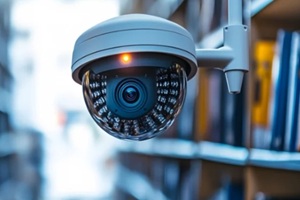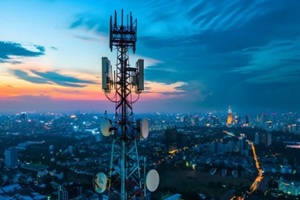 In environments such as retail, healthcare, production, financial, and warehousing, among many more, network inconsistencies can cause connection gaps in surveillance systems. The loss of security continuity can create potentially costly blind spots that lead to patient safety issues, stolen property, trespassing, and other industry-specific concerns.
In environments such as retail, healthcare, production, financial, and warehousing, among many more, network inconsistencies can cause connection gaps in surveillance systems. The loss of security continuity can create potentially costly blind spots that lead to patient safety issues, stolen property, trespassing, and other industry-specific concerns.
Modern security systems utilize cellular failover to provide a safety net for organizational security, preventing surveillance gaps by continuing to record and access on-site transmissions even if the primary network experiences issues.
This article details how today’s businesses can use cellular failover systems to safeguard their on-site surveillance and maintain access to their systems, regardless of their primary cellular network’s activity.
Why are Loss Prevention Cameras Needed?
Loss prevention cameras are typically the foundation of on-site security processes, helping to prevent theft, identify intruders, track assets, and keep employees safe. These cameras can be required for industry compliance, such as in financial and healthcare organizations, but any organization with on-site property or personnel can use them to safeguard their assets.
However, their importance makes disruptions with these cameras all the more costly. They rely on strong network connections to maintain surveillance; any network disruption can result in security gaps. In some industries, this can result in costly lawsuits or penalties due to non-compliance with employee or customer protection laws. For any organization, uninterrupted surveillance protects assets, personnel, and security ROI from the latest threats.
What is Cellular Failover?
When a primary connection fails or becomes unreliable, cellular failover provides the network with another option. It allows networks equipped with dual SIM routers, wireless failover routers, or cellular gateways to switch to secondary connections when needed, avoiding network downtime and unnecessary bandwidth usage.
A cellular failover system makes sure that businesses in any industry can maintain essential operations and access on-site resources, such as loss prevention cameras, from anywhere. When one network goes down, the system can switch to LTE or 5G cellular connections to keep video feed, dashboard alert, inventory tracking, and safety monitoring systems consistent until the primary connection can be restored.
Cellular failover should not be confused with load balancing, which refers to a network that uses two connections simultaneously. These specialized networks maximize connection speed in exchange for higher bandwidth and network costs. Failover focuses on maintaining reliability by allocating a primary and a standby network connection to switch between when network conditions require it.
Features of Cellular Failover for Security Systems
In today’s security setting, loss prevention cameras transmit and archive live video monitoring data to cloud servers. With an inconsistent or non-existent internet connection, important footage may fail to upload, leaving potentially costly blind spots in surveillance. Businesses with multiple locations may deploy hundreds of live monitoring feeds, exponentially increasing the cost of connectivity issues.
These features of cellular failover prevent surveillance network issues from becoming logistical, financial, and legal pain points:
- Automatic Network Switching: Cellular failover can transition between wired and cellular networks, buffering and reuploading dropped footage.
- Bandwidth Optimization: Routers with Quality of Service (QoS) features can prioritize important video feed data during failover until the network is back to full capacity.
- Multi-Carrier Access: Cellular failover prevents downtime during peak network usage, outages, or other failures by accessing multiple carriers.
- Remote Access: An organization’s security team can access and control on-site surveillance cameras remotely during failover, allowing them to maintain oversight even during network interruptions.
- Regulatory Compliance: In highly regulated industries such as healthcare and finance, continuous surveillance may be a legal requirement.
Discerning businesses, including those with security regulation requirements, implement automatic failover in their networks to make connectivity practically seamless, even if interruptions technically occur. Networks equipped with centralized monitoring portals create an even simpler surveillance environment for network administrators by allowing them to track device uptime and verify failover performance from anywhere.
How to Choose a Cellular Failover System
Reliable failover implementation is not a guarantee, making it necessary to recognize the factors that maximize the system’s effectiveness and use these simple steps to choose the right system:
 Choose routers with multi-carrier switching to maximize uptime
Choose routers with multi-carrier switching to maximize uptime- Look for centralized network performance monitoring tools (such as Allpoint Command)
- Test cellular failover to confirm that automatic network switching functions correctly
- Train personnel to recognize failover behavior and respond to network outages
While these steps can help businesses set the right priorities, local providers help administrators choose the network that makes the most sense for the needs of their industry and workflows.
Local Wireless Providers Protect Businesses with Cellular Failover Services
When loss prevention cameras are all that stands between the assets of a business and major security breaches or regulatory noncompliance, network consistency can make all the difference. At Allpoint Wireless, our network services provide low-cost, reliable solutions, including customizable technical support and a versatile self-service monitoring portal called Allpoint Command.
Don’t let a network outage leave your business exposed. Allpoint Wireless makes failover simple with 12 months of free financing on wireless units, SIM cards, data plans, and more. Contact our team today to protect your security investment.